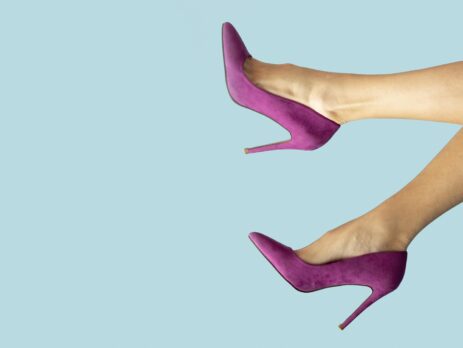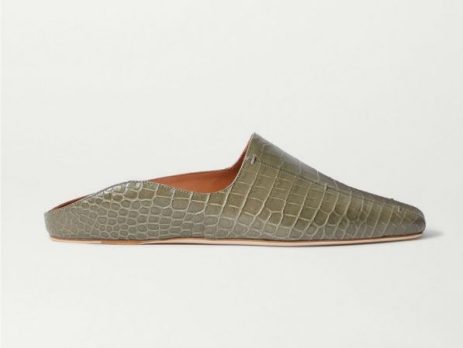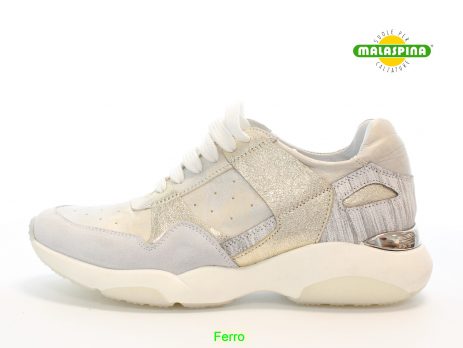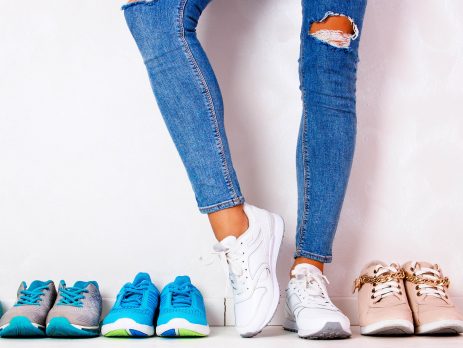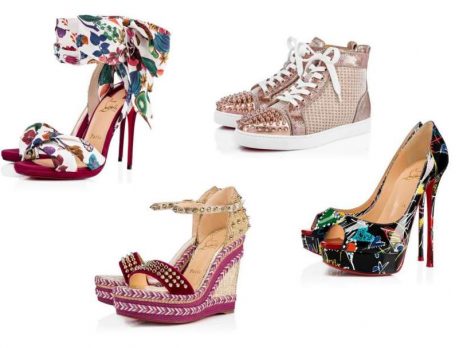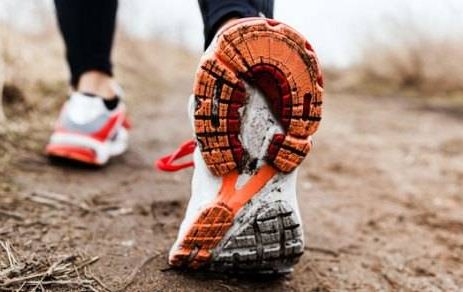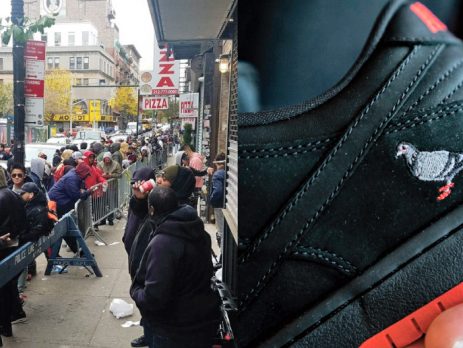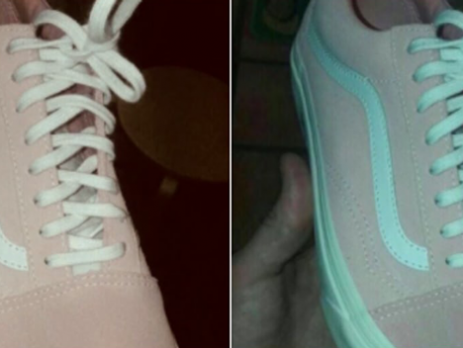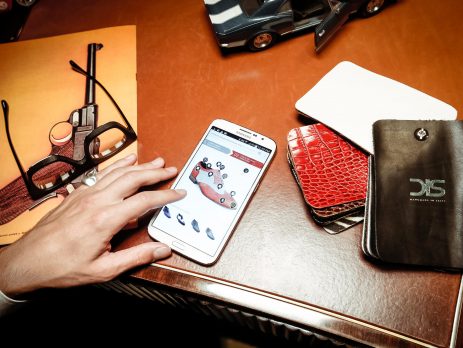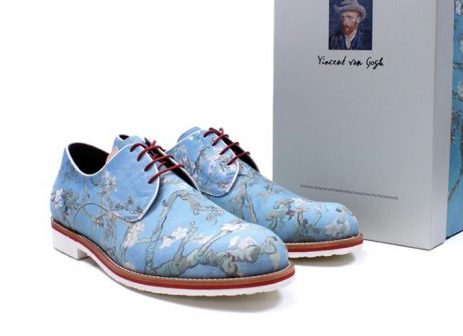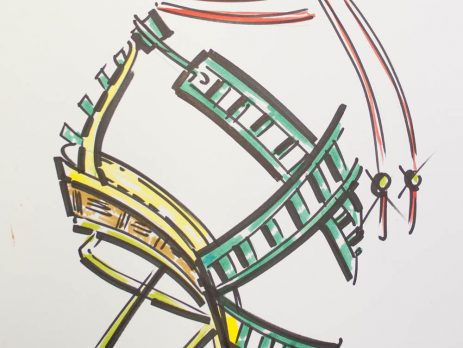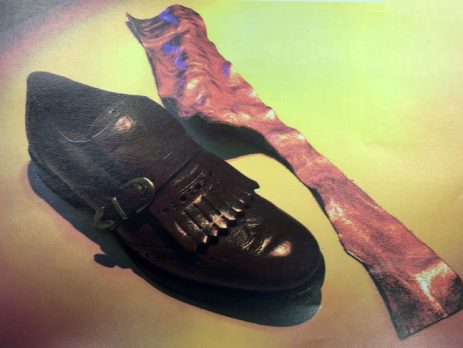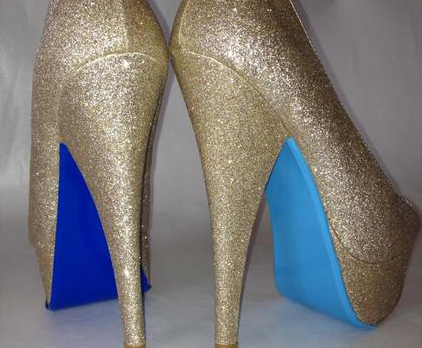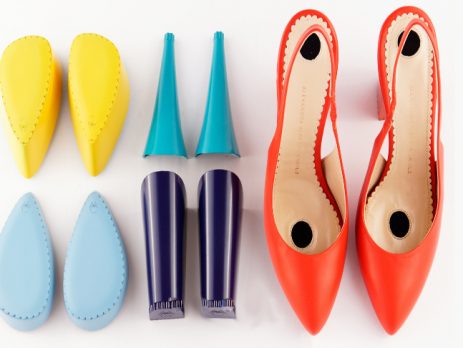Storia della scarpa con i tacchi: un’evoluzione lunga secoli
The evolution of footwear, from a symbol of prestige, authority, and male power to a tool of feminine seduction, arouses conflicting passions. Loved and despised, considered instruments to emphasize legs and silhouette, but also harmful to foot health and body posture, high-heeled shoes are the subject of debate for various reasons and valid criticisms.
Their discomfort is undeniable, as is the widespread awareness that most contemporary footwear, especially those with heels, are often not designed to prioritize foot comfort and mobility. Instead, aesthetics often take precedence over functionality, and these shoes are conceived to meet social and psychological objectives.
Among the oldest known shoes is a moccasin found in Armenia dating back approximately 5,500 years, made from a single piece of tanned cowhide with laces along the front and back seams. Archaeologists argue that it was intended to facilitate walking on rough terrain, protecting the feet from cold, stones, and thorny obstacles.
In a sense, the fundamental design of shoes has undergone few changes throughout human history, while the earliest traces of high-heeled shoes date back over 2000 years, evolving in design and social significance.
FROM EGYPTIANS TO GREEKS TO PERSIANS
Mural depictions testify that the Egyptians wore this type of footwear, including an artisan wearing boots with heels, suggesting they were used for both work and walking on muddy terrain. Historical evidence also reveals the use of such shoes among actors in ancient Greece, who wore them during their theatrical performances. The height of the heel represented the significance of the character, and a 10-centimeter heel was a sign of honor and esteem.
Some believe that high-heeled shoes may have Persian origins, where soldiers used them to secure their feet in stirrups and maintain balance in the saddle. They managed to attract the attention of European aristocrats and became a symbol of power.
However, some historical evidence documents the use of high-heeled shoes among Western women in the 14th and 15th centuries, such as the Venetian-origin 'cioppine.' These shoes resembled very high wedges, less sophisticated in design but often decorated with paintings or mother-of-pearl inlays. The height of the cioppine indicated the social rank of the wearer, and noblewomen were willing to sacrifice comfort to maintain their prestige.
Also called "pianelle," these shoes, despite the name, had an extraordinarily high heel and an open back, with cork soles to lighten them. They were worn by both men and women, but while men preferred closed models with a low heel, female versions could reach up to half a meter in height.
Walking in these shoes was extremely difficult, often requiring assistance to maintain balance. This type of footwear also served as a tool of seduction, making walking not only complex but also sensual and charming. Probably for this reason, the spread of high-heeled shoes was also favored by the male desire to exert social control over women.
FROM THE FRENCH COURT TO LOUBOUTIN
According to tradition, Catherine de' Medici contributed to the spread of high-heeled shoes. Irritated by the height difference between her and her husband, Duke Henry of Orleans, future Henry II, she asked the court cobblers to create shoes with a 7 cm heel. By the late 16th and early 17th centuries, all European noblewomen followed her example.
Another change for heels occurred in 1673 when King Louis XIV ordered the creation of the first pair of shoes with heels and red soles, precursors to the iconic Louboutin shoes (inspired by the French king himself). The Sun King became practically obsessed with them, perhaps due to his short stature of 163 cm. He issued a law allowing only members of his court to wear red heels, forbidding them to outsiders. The privileged courtiers had to distinguish themselves in some way but ended up inspiring those who aspired to aristocracy.
WIDESPREAD USAGE AND THE GREAT RENUNCIATION
Between the late 19th century and the early 20th century, during the Victorian era, high-heeled shoes became particularly popular among women, while men, simultaneously with the abandonment of stirrups and later with the Great Male Renunciation, opted for more sober and comfortable clothing.
With the advent of photography in the mid-19th century, heels began to be considered a symbol of femininity and sensuality, an idea that was further reinforced in the 1940s and 1950s with the arrival of pin-up culture.
The evolution of high-heeled shoes has traversed periods of alternating progress and episodes of female subordination and "objectification." The stiletto heel, for example, attributed to various designers but mainly to shoemakers in Vigevano in 1953, offered the possibility of accentuating the grace of movement but also exposed wearers to falls and more complex steps.
While Marilyn Monroe considered high-heeled shoes an irresistible weapon of seduction and argued that women owed a lot to them, the opposite opinion is also widespread. Fortunately, today, freedom of choice is imperative. If for decades heels were the only option, wearing them is now a personal choice, no longer a social obligation. However, we should not overlook the importance of shoe soles for women, playing a fundamental role in foot comfort and health.
Source: https://www.alfemminile.com/stili-e-tendenze/storia-della-scarpa-con-i-tacchi-dagli-albori-del-feticismo-ai-nostri-giorni
Source images: https://www.contigo.it
The slippers as the coolest accessory of the moment
Who would have believed that the slippers we wear every day are actually the coolest accessory of the season. Between the lines we suggest some tips to show them off!
RAIOT, The intelligent shoe and smart
 The Shoes Raiot interpret the new era that celebrates the millenials together with the User Experience, able to interact with a product or service, the latter is the philosophy that underlies Raiot (Radical Apparel Internt of things), the start-up Italian born to create a series of fashion goods tech by combining technologies smart fashion and strictly Italian.
(more…)
The Shoes Raiot interpret the new era that celebrates the millenials together with the User Experience, able to interact with a product or service, the latter is the philosophy that underlies Raiot (Radical Apparel Internt of things), the start-up Italian born to create a series of fashion goods tech by combining technologies smart fashion and strictly Italian.
(more…)
Co-Natural, a new concept of Lineapelle, presents the trend of the Summer 2020
The emotion and irrationality are the main architects in defining the color trends for the next summer season, everything is seen as a fusion between machine and human which will make it difficult to distinguish such union, thus was born a rediscovery of nature as seen through the eyes of innovation this is thanks to the new concept of Co-Natural (Con-Naturale) presented by the Committee Lineapelle Fashion: (more…)
The white sneakers will never go out of fashion!
The time in which the sneakers were used simply as shoes for sports was cleared through customs, returning at the foot of the most famous fashion bloggers.
(more…)
The materials that create success soles for shoes
The sole is the bottom part of the footwear in direct contact with the ground, so the main part that protects the sole of the foot. We have drawn up a mirror to make clarity and submit the whole range of materials at the disposal of companies producing soles which meet the different qualitative requirements, commercial and functional.
(more…)
Fashion and trends of the summer 2018
The summer is now entering, between holidays and fun cannot cease to enhance our outfit for every occasion. We have collected some trends in shoes:
(more…)
The solidarity part from shoes
HUMANA People to People Italy teaches us that solidarity can also start from a pair of shoes.
Now we will explain how it is carried out. The Onlus with its yellow containers is dedicated 20 years to the collection of clothes and shoes used as resources for the implementation of development interventions in the south of the world. In these lines will reveal how does the life cycle of a pair of shoes once inserted in the container. The project entitled "Even with the foot you can give a hand" was born thanks to a collaboration between Humana and Assocalzaturifici, the National Association of Italian Footwear which gathers over 600 companies in the sector located all over the Italian territory. Has invited companies to donate more than that footwear end-of-series and old collections, even scrap production sample, not recent, thus managing to space in the warehouse to the advantage of solidarity. (more…)With the waste of the apples are born the new Shoes
Consumers lately have become ever more attentive to what they buy and wear, it is not easy to take informed decisions but finding information is important and helps us to discover new brands such as the new collection Khrio D+ of Alma, who has invested a lot of resources in the project "Appleskin". Everything starts with apples.
(more…)
In New York the reprint of the Nike Jeff Staples ago block traffic
At 12 years from its output, the reprint of the first shoe designed by Jeff Staples, realized by Nike, has sent in raptures the "insane for the sneaker" New Yorkers.
The Black Pigeon, model in premium black leather with a pigeon imprinted on the back, had to go on sale on monday at 11.00 in the morning, but from sunday evening the prospective buyers have begun to camp in row behind Reed Space, the new shop of staples in the Big Apple. The next morning the police has therefore ordered the evacuation.
The traffic of the narrow streets adjacent to Downtown Manhattan (the row has stretched for hundreds of meters) is in fact easily subject to go tilt. With a tweet, the store has reassured the full availability of the product and delayed the start of the sale to Tuesday morning, Day of closing of schools (for track of the municipal elections) and traffic lighter. Staples is the founder of one of the streetbrand (total look) more popular in the USA, among the skater.
Article shared by: https://www.laconceria.it/calzatura-2/new-york-la-riedizione-della-nike-jeff-staples-bloccare-traffico-la-polizia-sgombera-clienti
Author: PT
The shoe by different colors
 Since a few years a shoe is shaking the people of the network. Some see the shoe as pink with laces white or blue with gray laces. People can see it with different colors; according to the opinion of experts, vision is affected by several factors.
(more…)
Since a few years a shoe is shaking the people of the network. Some see the shoe as pink with laces white or blue with gray laces. People can see it with different colors; according to the opinion of experts, vision is affected by several factors.
(more…)
DIS, tradition and innovation for a perfect shoe
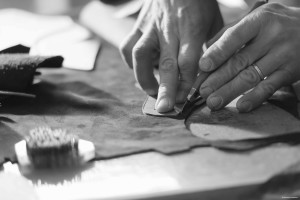
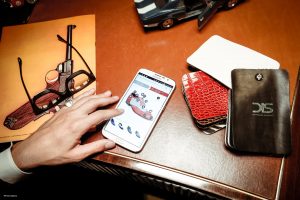 Today there are telling as an innovative idea, led by Digital, is able to rethink and break the typical patterns of production processes and the market. At the center of this idea there is the handicraft tradition alongside "Internet", the result? The creation of a custom shoe in 3D through the interactive step and in 4 weeks the shoe may be worn, where afterwards we will space.
(more…)
Today there are telling as an innovative idea, led by Digital, is able to rethink and break the typical patterns of production processes and the market. At the center of this idea there is the handicraft tradition alongside "Internet", the result? The creation of a custom shoe in 3D through the interactive step and in 4 weeks the shoe may be worn, where afterwards we will space.
(more…)
Bringing a picture of Van Gogh?
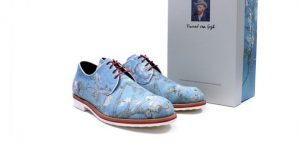 It has been fixed for the next autumn the output of the first film based on the paintings of Van Gogh, his name is loving Vincent. In parallel to the output of the film will begin the placing on the market of footwear Van Gogh, footwear inspired by the paintings of the artist and his canvases that are represented in the uppers. During the premiere of the film, which occurred in the course of the Film Festival of Annecy in France, the authors Hugh Welchman and Sean Bobitt were presented by fitting the creations of designer Tomas Snels, produced by calzaturificio Dutch Van Drunen Schoenfabriek.
(more…)
It has been fixed for the next autumn the output of the first film based on the paintings of Van Gogh, his name is loving Vincent. In parallel to the output of the film will begin the placing on the market of footwear Van Gogh, footwear inspired by the paintings of the artist and his canvases that are represented in the uppers. During the premiere of the film, which occurred in the course of the Film Festival of Annecy in France, the authors Hugh Welchman and Sean Bobitt were presented by fitting the creations of designer Tomas Snels, produced by calzaturificio Dutch Van Drunen Schoenfabriek.
(more…)
Un talento per la Scarpa, the edition 2017
"Un talento per la Scarpa", it is the new theme of the XVII° edition of the international contest for young stylists promoted by Sammauroindustria the association that gathers the principal entrepreneurs calzaturieri of the district of St. Mauro Pascoli.
(more…)
The shoes with intelligent soles, Samsung IoFIT
Samsung IoFIT is the last technological gadgets that turns to the sectors still virgin on the digital side. As the sports footwear, for example, when the start-up of Samsung, Salted Venture, has made a couple of sneakers ingenious and at the same time useful to all the sportsmen both professionals who do not.
(more…)
Artigiano del cuoio, a skin to the plant with a heart of metal
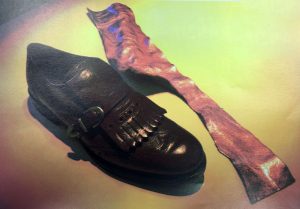 Among the many novelties of the season 2016-2017 season is the one that is proposed by the company "craftsman of leather" to Ponte Egola: a skin to the vegetable with a heart of metal, i.e. of an aluminum thin but very strong, similar to that used in the food sector.This material favors the creation of footwear, also of bags that you crumple at will, as if they had a memory itself in the folds. The holder of'company Simona Marianelli, says"An article very elaborate, because it is perfectly open to half a skin already very thin in order to introduce the foil".in itself in the folds.
(more…)
Among the many novelties of the season 2016-2017 season is the one that is proposed by the company "craftsman of leather" to Ponte Egola: a skin to the vegetable with a heart of metal, i.e. of an aluminum thin but very strong, similar to that used in the food sector.This material favors the creation of footwear, also of bags that you crumple at will, as if they had a memory itself in the folds. The holder of'company Simona Marianelli, says"An article very elaborate, because it is perfectly open to half a skin already very thin in order to introduce the foil".in itself in the folds.
(more…)
IconaBio, how to combine bio and fashion
From the experience of Edouard Obringer, founder of the brand of shoes eco-sustainable IconaBio, here is what he told the leader of the neo-brand.
(more…)
The fashion of custom soles
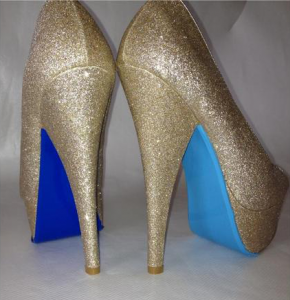 The new fashion for passionate of shoes are the soles for footwear customizable. Astonished? In fact a little we also at the beginning, but after the quarrel on the sole red, property of a known brand of shoes French, the custom soles have become ever more foot.
(more…)
The new fashion for passionate of shoes are the soles for footwear customizable. Astonished? In fact a little we also at the beginning, but after the quarrel on the sole red, property of a known brand of shoes French, the custom soles have become ever more foot.
(more…)
The first modular shoes
 The shoes of Alexandra Chiolo Alberta, young entrepreneur 28 years are truly innovative: you can combine why are adjustable. They are called Albertine and are composed of an upper in calf on which you are installing heels plateau and available in different colors and heights, which engage and disengage from the upper giving life each time to a different model. (more…)
The shoes of Alexandra Chiolo Alberta, young entrepreneur 28 years are truly innovative: you can combine why are adjustable. They are called Albertine and are composed of an upper in calf on which you are installing heels plateau and available in different colors and heights, which engage and disengage from the upper giving life each time to a different model. (more…)



